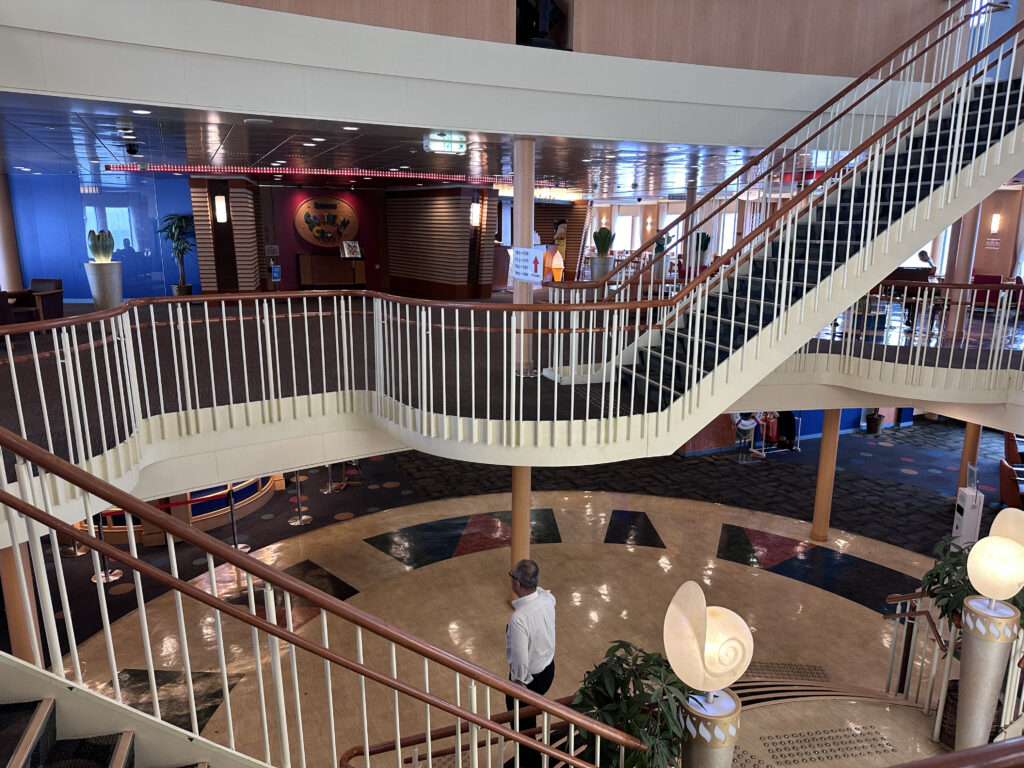 Japan is famous for its worldbeating Shinkansen bullet trains and incredibly efficient widebody domestic flights, but this island nation has a secret for enthusiastic travellers: overnight cruise ferries. Many routes are served around Japan’s coast, with the ships of the Taiheiyo (Pacific) Ferry company running along Japan’s Pacific coast from Tomakomai in the northern island of Hokkaido to Sendai in Japan’s northeast to Nagoya in central Honshu and back again.
Japan is famous for its worldbeating Shinkansen bullet trains and incredibly efficient widebody domestic flights, but this island nation has a secret for enthusiastic travellers: overnight cruise ferries. Many routes are served around Japan’s coast, with the ships of the Taiheiyo (Pacific) Ferry company running along Japan’s Pacific coast from Tomakomai in the northern island of Hokkaido to Sendai in Japan’s northeast to Nagoya in central Honshu and back again.
The Sendai to Nagoya route departs at 1250 in the afternoon and arrives at 1030 the following morning. With three ships, each segment is served every other day. Alternatives include a 3-4 hour Shinkansen trip or a 1h15 flight.
While finding timetable information was a little complicated on the English language website, using in-browser translation for the timetable and then calling the English-language, live-interpreter hotline worked exceedingly well. In line with much of my experience making reservations in Japan, no credit card was needed as a guarantee. Being used to long strings of letters and numbers for airline and hotel reservation codes, I had to laugh as the interpreter informed me that my reservation number for the trip was 23. Yes, 23.
Getting to the port was simple: 20 minutes on a local train from central Sendai and then a quick taxi or bus ride to the port. Checkin was simple, although the presence of English, written or spoken, was minimal. I have some basic tourist Japanese and an immense willingness to use Google Translate, which was sufficient to exchange payment, get tickets and understand which of the meal vouchers was for lunch, dinner and breakfast.
A small boarding lounge (think airport gate area) was perfectly fine for a few minutes before boarding through the elevated gangways to the 2004-built MS Kiso, the oldest of the three Taiheiyo Ferry ships, with a capacity of 800 passengers, 188 trucks and 113 cars. Other passengers on board seemed mainly to be retirement-age couples with a sprinkling of truckers and a random assortment of others.

The ship is roll-on roll-off, and relatively shallow-drafted, so it does have a tendency to wallow in higher seas. Image: John Walton
Onboard, the décor was very 2000s hallucination chic. Notionally themed for the South Pacific — the Tahiti Restaurant, the Southern Cross Theater, the Mermaid Club cafe, and so on — it was a lot of red-blue-yellow primary colours and curved wood effect in the public areas. It reminded me a lot of what cross-Channel ferries between England and France from the same era used to look like.
There are an impressive twelve types of sleeping accommodation on board, from a dormitory style futon-on-floor option through to capsule hotel type pods, Japanese tatami-mat rooms and western style cabins. At the top end are three suites: the Semi-Suite (with windows only at the front), the Suite (windows on the front and sides), and the Royal Suite (with a separate living room).
All western-style cabins have twin beds that can’t be moved together, which seemed odd even on a ship. Cruise ship cabins generally offer convertible twin/king options.
I chose the Suite for the experience, and this was a large single cabin with the aforementioned twin beds, a large white pleather sofa that could also be used as a bed for a third passenger, a large bathroom with shower and a big soaking tub with its own window, and a desk/minibar area.

The curtains on the forward-facing windows had to be closed during the hours of darkness for navigation purposes. Image: John Walton
The Suite was large compared with a Japanese hotel room, but not a suite in the way that one might think of it in the hotel sense, with separate rooms for beds and sofa.
The beds were Japanese-firm, and I got a good night’s sleep even though the ship wallowed quite a bit in moderately rough seas. There’s no wifi, and only intermittent cellular coverage after departure if the ship is rounding a cape or headland.
Lunch on the first day and dinner and then breakfast on day two were included, and were offered buffet style in the Tahiti Restaurant. It was tasty enough, about the same relative quality with other overnight ferries I’ve taken, and there was enough variety across the three meals with a dozen or so main dishes plus stalwarts of curry, rice and soup.

I thought the food was decent, along the lines of a mid-range hotel restaurant, and certainly didn’t go hungry. Image: John Walton
Entertainment in the evening was a jazz trio who were fine in a workmanlike kind of way with a love of explaining the music in great detail (I think; it was in Japanese well beyond my current level), but the surreality of sitting in a mostly empty theatre with several very keen audience members at the front and a few elderly couples and truck drivers scattered elsewhere is my overriding memory of the performance.

With only a few passengers on board, there was always space in the oddly themed restaurant. Image: John Walton
The highlight of the experience for me was the Grand Bath Japanese sento bathhouse, which offered the unique experience of soaking in a Japanese-style communal bath over the Pacific. There’s a men’s and women’s bath onboard, open for most of the trip.
Apart from the restaurant and a coffee shop, there was a small shop selling a variety of items from branded souvenirs (including wine) to a decent array of snacks and beverages.
In the morning, sailing into beautiful Ise Bay past the Chita, Shima and Atsumi peninsulas and under the impressive Meiko-Nishi Bridge was a striking way to finish the trip.
All in all, for a fare of ¥31600 (just over US$200) per person, and considering it saved a night of hotel costs I thought it was decent value compared with taking the train (¥20620 one way in standard class with seat reservations according to the Jorudan fare finder) or flying (around ¥12000 one way including getting to and from the airport). Now that I’ve done the Suite experience, I’d certainly consider either an inside cabin (¥13500 per person) or an outside cabin (¥15700 per person) in the future.
Related Articles:
- What aircraft cabin designers can take from the newest Shinkansen
- Choosing comfort over speed on Japan’s Hinotori Limited Express
- What aviation can learn from cruise lines
- Award-winning seat design takes off with Napaway sleeper coach
Featured image credited to John Walton
















